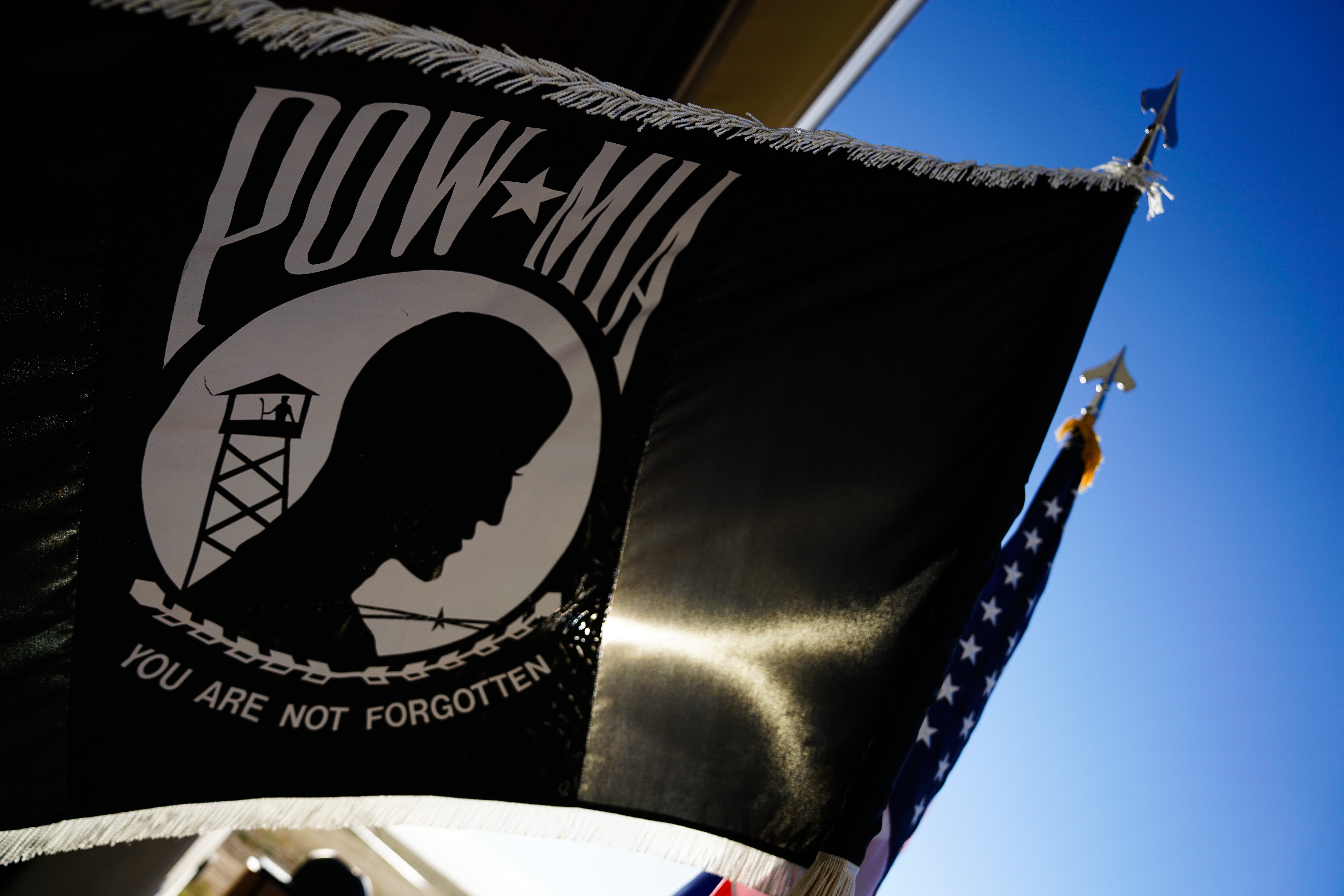
Part of the spirit, the culture and the values of the U.S. military is the creed that you don’t leave anyone behind, whether captured, injured or dead. It is also a national value.
It was so in September 2009, 65 years after the end of World War II, when I penned “Leave No Man Behind—65 Years Later.”
At that time, there were more than 84,000 Americans still missing from our previous wars.
Our values were still the same in October 2016 when I revisited this solemn subject in “Bringing Our Heroes Home, No Matter How Long It Takes.” Then, that grim number was 83,000.
Friday, September 15, was National POW/MIA Recognition Day, a day dedicated since 1979 to remembering and honoring those Americans who were prisoners of war and those who served and never returned home.
On this Recognition Day, nearly 81,000 American service members still remain unaccounted for from previous wars and conflicts.
Accounting for the tens of thousands of missing service members is a daunting, herculean, near-mission-impossible task.
However, the commitment to do the impossible remains a solemn goal of the Department of Defense (DoD) as reflected by the title of a recent DoD piece on this subject, “DOD Won’t Stop Looking Until All POW/MIAs Are Home.”
The weight of this monumental, incessant task falls on the shoulders of the DPAA (Defense POW/MIA Accounting Agency), continuing the honorable mission of several predecessors and assisted by 45 nations and numerous organizations, groups and individuals.
To get an idea of the slow, difficult, painstaking, yet unflinching progress made by the DPAA and its supporters, one just needs to take a look at the meticulous entries in the DPAA’s 209-page “Recently Accounted For” list, presently containing 3,127 names.
The oldest entry on the list is that of Army Chief Warrant Officer (CWO) William C. Jessie, a Vietnam War veteran who was “accounted for” on April 22, 1973. The most recent one is for Army Cpl. James A. Hurt, a U.S. Army Air Forces World War II veteran accounted for on August 21, 2023.
Many entries lead to a profile of the service member, along with a photograph of the service member, a map showing the “location of the loss,” and the names of the service members associated with the accounted-for member.
For example, on CWO William Jesse’s “page” we learn:
Jesse joined the U.S. Army from Oklahoma and was a member of Troop F, 4th Cavalry Regiment, 1st Aviation Brigade.
On May 2, 1972, he was the pilot of a UH-1H Iroquois assisting in search and recovery efforts in Quang-Tri Province, Vietnam. The Iroquois was downed by an enemy surface-to-air missile, and CWO Jesse was killed in the crash. Search and rescue efforts for the Iroquois were prevented by the heavy enemy presence in the area of the crash.
In July 1972, a search team reached the crash site and recovered the crew’s remains. On April 22, 1973, the Central Identification Laboratory-Thailand (CILT, now DPAA) identified his remains.
While the entry on the most recent “accounted for” service member, Cpl. James A. Hurt, is very brief, the next most-recently-accounted-for entry (just over a month ago) for a World War II veteran is more informative:
Second Lieutenant Brewer, who joined the U.S. Army Air Forces from North Carolina, was a Tuskegee Airman and member of the 100th Fighter Squadron, 332nd Fighter Group.
On October 19, 1944, he piloted a single-seat P-51C Mustang (tail number 43-25108, nicknamed “Traveling Light”) out of Ramitelli Air Field in Italy as one of fifty-seven fighters on a bomber escort mission over enemy targets in Regensburg, Germany. The flight left Ramitelli and split into three groups over the Udine area of Italy to continue on to the target area. However, heavy cloud cover forced nine fighters to return to Ramitelli early, and none of the other fighters could locate their bomber aircraft or the target.
Forty-seven fighters eventually returned to base, and 2nd Lt. Brewer was not among them. Reports from other pilots on the mission indicate that 2nd Lt. Brewer had been attempting to climb his aircraft out of the cloud cover but stalled out and fell into a spin.
After the war, a body was recovered by U.S. personnel from a civilian cemetery in the area, but the remains could not be identified using techniques available at the time and were interred as an unknown.
In 2011, researchers examined the case of those unknown remains and discovered that an Italian police report indicated they were recovered from a crashed fighter plane on the same day as 2LT Brewer’s disappearance. German wartime records corroborated this information.
In June 2022, the remains were disinterred and sent to a DPAA laboratory for further study. The totality of evidence allowed a positive identification of the remains as those of 2LT Brewer.
In fiscal year 2023, DPAA recovered the remains of 127 service members: 88 from World War II, 35 from Korea, and four from Vietnam. Scarcely a week goes by that a soldier, sailor, Marine or airman is not “accounted for.”
But even so, that still leaves more than 80,000 stories to be told. Stories of heroism about those who went missing in action, and stories of perseverance, altruism and especially hope on the part of those fulfilling the nation’s solemn pledge to leave no service member behind.
















